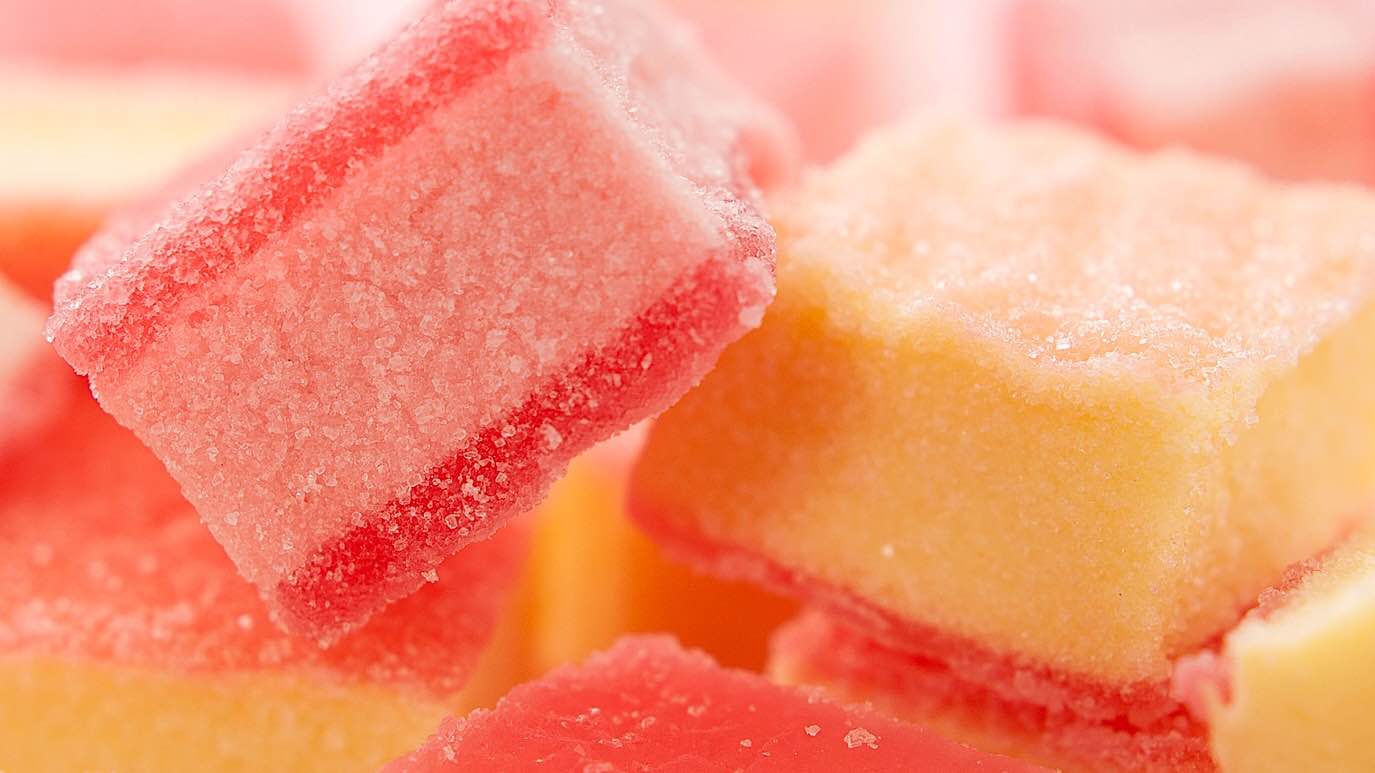As human beings, we all have specific weaknesses when it comes to food, and for many of us, anything that contains sugar satisfies our cravings and gives us comfort when we need it most. If you go into any store nowadays and read the labels on packaged food, you’ll find it contains sugar in some form and usually in ENORMOUS amounts. For example, a bottle of soda can have more than fifty grams of sugar, which far surpasses the recommended amount for the average adult.
In today’s world, where we can get a sugary concoction of artificial ingredients at any corner store or restaurant, staying away from this toxic additive in food can become quite a challenge. However, trying our best to at least cut back on sugar can prevent diseases such as diabetes, strokes, cancer, cardiovascular disease, heart disease, obesity, and more. In recent years, food companies have replaced added fats with sugars to follow health trends, but research proves that sugar, not fats, has contributed far more to the decline of people’s health at large.
However, even if you’ve consumed sugar, you can quickly reverse the harmful side effects by severely reducing your sugar intake. Many diets take a while to show results, but cutting out added sugars can bring results in as little as ten days. In a new study that included children, researchers saw dramatic improvements in the children’s health in just over a week.
These Things Happen To Your Body When You Go Without Sugar For Ten Days
Dr. Robert Lustig and his team of researchers from the University of California, San Francisco, noticed an average decrease in triglyceride levels by 33 points. The LDL (bad) cholesterol dropped by five points, and diastolic blood pressure. In only ten days, all children participating in the study dramatically decreased their risk of developing Type 2 diabetes.
Even though this study only includes children, we can only assume that this would work on adults.
However, we’d like to clear something up before we move forward. Many people assume that ALL sugars cause adverse health, but we need sugar to survive. The key is to consume the RIGHT kind of sugars from whole, plant-based foods. These sugars occur naturally, and our bodies can assimilate and digest them perfectly. The problem exists when we extract sugars from plants and put these “food-like substances” into processed foods. Added sugar has no nutritional value whatsoever, so the body recognizes the calories but does not know how to convert the energy into a usable form. Thus, we see rampant diabetes, cancer, heart disease, etc., in modern society.
Sugar spikes
Also, not all calories perform the same way in the body. Added sugar causes your insulin levels to spike, even with natural sugars. However, over time, your insulin response will become damaged after consuming added sugars in large amounts and cause inflammation. On the other hand, if you consume the same amount of calories in the form of broccoli, for example, your body will process it as actual energy since it contains the correct alkalinity and nutrients for us.
Food companies spend millions per year trying to convince us to buy their products, but truthfully, many food substances they sell have no nutritional value whatsoever. Simply put, we should all make an effort to eat primarily whole, plant-based foods that our bodies have been designed to consume and try to steer clear of processed foods. Even if something says “low calorie” or “fat-free” on the label, it does not necessarily indicate a healthy option. In fact, many companies substitute sugar to conserve the flavor without adding extra calories or fat.
So, how much sugar should you consume?
For an average two thousand calorie diet, the Heart and Stroke Foundation recommends that only 10% of our calories come from sugar or about twelve grams. Many products on the shelves, including sauces and dressings, come very close to or even exceed that amount with just one serving. So, when you go grocery shopping next, pay attention to the labels, and opt for whole foods as much as possible. While processed food comes at a lower price, you can’t put a price tag on health. Sure, purchasing fruits and vegetables might cost significantly more, but think of it this way: you will save THOUSANDS on medical bills later in life, so which would you rather have?
Keep in mind as well that added sugars can hide under many different names and labels, so look out for the following when you go to the store: glucose/fructose, high fructose corn syrup, corn syrup, sucrose, maltose, dextrose, beet sugar, glucose solids, cane sugar, dehydrated cane juice, dextrin, and maltodextrin, among others.
Also, remember that our brain responds the same to sugar as to certain drugs, and some studies have even found sugar to be eight times more addictive than cocaine! With this in mind, hopefully, you will aim to make sugar a part of your diet and fill your cart with more living foods. Your body will indeed thank you in the long run!
8 Ways to Reduce Sugar Cravings
While cutting sweets out of your diet may seem complicated, it comes with great rewards. Here are some easy ways to help combat your sugar cravings and possibly lose a few pounds.
1. Fill up on Protein
You need between 46-and 56 grams of protein daily, which helps fill you up and satisfy you. Strive to ensure each meal has about 20 grams of protein so that you don’t feel hungry and want to reach for sweets.
2. Be On the Look Out for Hidden Sugars
There are refined sugars in many beverages and foods that you don’t even realize. It would help if you ate your calories rather than drink them. Things like fruit juice are high in fructose, making you crave sweet things even more.
Opt for low-calorie and sugar-free beverages. Always read the label and know what hidden sweeteners are present in your meals.
3. Include Complex Carbs in Your Meals
There are two types of carbohydrates, which are complex and simple. You don’t want to fill up on simple ones as they will pack on the pounds and enhance your cravings. Complex carbs are the ones that will keep your cravings at bay, and you will find them in things like oats, cereal, whole wheat bread, and beans.
4. Find Sweet Alternatives
You can’t deprive yourself of everything sweet, or it could lead to binge eating. However, you can find alternatives that won’t kick your cravings into overdrive or affect your glucose levels. It’s okay to have a piece of cake once in a while as long as you can control it.
5. Stay Hydrated
Did you know that many people reach for sweets when their body is craving water? The CDC states that people are severely water deficient, as they don’t drink anywhere near the required amounts.
They’ve found that teens, on average, drink about fifteen ounces of water each day, and adults consume about 39 ounces, which is nowhere near the required amounts. Filling up and keeping your body hydrated can also help reduce unnecessary hunger.
6. Eat More Often
Consuming smaller meals more often than eating three large meals a day is better. It will help you keep your glucose levels in check, but it can help reduce cravings too. Many people reach for things in a hurry because they’re starving, and it’s often a vending machine or something from a convenience store during the workday.
Pack some healthy snacks with you and try to eat every two to three hours to keep binge eating at bay.
7. Chew Gum
Chewing sugar-free gum is a great option to keep you from indulging in sweet treats. A study by The Pennington Biomedical Research Center shows that people who chew gum after lunch are way less likely to consume sugary sweets in the afternoon.
Plus, when the folks in the study did snack, the group that chewed gum ate fewer calories than those who didn’t chew gum. Additionally, the chewing motion can help relieve anxiety, which is always helpful.
8. Switch to a Low Carb Lifestyle
While you need some carbs to survive, you can live on much less than you eat. Stay below three hundred carbohydrates daily to keep your cravings at bay. Diets like keto, paleo, and the Mediterranean are great for helping people with intense cravings to kick them to the curb.
12 Natural Sweeteners to Replace Sugar
An all-natural sweetener is an answer if you long for that sweet kick in your tea, coffee, or desserts. Avoid using sugar-alcohols that can make you sick when eating in abundance, but you should try some of these all-natural alternatives.
1. Monk Fruit
This fruit is known for its sweetness. This Southeast Asia wonder is way sweeter than the white crystals, so you only need a little bit to achieve the required sweetness. Plus, there are antioxidant properties, and it has zero carbs is also a benefit.
2. Stevia
This alternative is made from the leaves of the stevia plant. It has no calories, so it’s great for diabetics and dieters alike. It can be used as a spoon as a sweetener to substitute of table-sugar with just about anything your heart desires.
3. Xylitol
This sweetener is made from birch trees and has forty percent lower calories than refined options. It’s dangerous for pets, so make sure you don’t let Fido have a taste of anything made with this sweetener. For you, it’s the perfect supplement to keep your glucose levels regular and your waistline slim.
4. Pure Maple Syrup
Pure maple syrup comes from extracting sap from a tree. Now, don’t be confused by the syrup bottles on your shelves at the supermarket, as they are artificially flavored and not the real thing. By reading the labels and the price tag, you will know if you have the real maple variety, as it’s a bit pricey.
It’s great for people with diabetes as it has a low glycemic index, and when using it in a recipe, you need slightly less than you would traditional sweeteners. You only need about three-fourths of a cup of maple syrup to substitute for one cup of table sugar.
5. Raw Honey
Unlike refined sweetness, this natural product has antioxidants and anti-inflammatory properties. It’s chocked full of vitamins and minerals that are healthy. Plus, the antibacterial and antifungal properties can’t be denied.
Another fact is that picking honey harvested locally can also help with your allergies as bees pollinate on the flowers which aggravates your sinuses. You’re introducing your system to micro amounts of this pollen, which will help you build up a resistance to them.
6. Figs
Figs are versatile fruit as they can replace fat and sweetness. They’re loaded with things like iron, fiber, and potassium. You can blend them in a food processor to make a puree to use as a sweetener in recipes. To make fig puree, use eight ounces of figs and one-third of a cup of water to make a liquid sweetener.
7. Blackstrap Molasses
Don’t be fooled by the various types of molasses on the market, as blackstrap is the healthiest. It’s lower on the glycemic index as well as has fewer calories. It’s full of nutrients like iron, magnesium, copper, and potassium.
8. Yacon Syrup
Yacon syrup is not commonly marketed as a sweet alternative. Still, it is a great low-calorie option that improves your gut health. It has soluble fiber and prebiotics to help you regulate your digestive system. The key is to use this in moderation, as it tends to cause stomach upset when eaten in abundance.
9. Banana Puree
When you need more potassium and fiber, you look to bananas. However, if you need to add sweetness to your cooking, you can also use this yellow fruit. You want to make a puree with bananas and water, and it can then be used as a liquid sweetener in anything you want.
The best thing about this natural sweetener is the price. Most alternative sweeteners are very expensive, but you can make this one for nearly nothing.
10. Dates
Pick up some dates if you’re looking for a great natural sweetener rich in nutrients and fiber. Did you know that it can also help to regulate your digestive system? You can use them raw or make a liquid sweetener with the fruit and some water in a food processor.
11. Agave
Agave syrup is super sweet, 1.5 times that of regular table salt. It has around sixty calories for each tablespoon, but its health benefits outweigh traditional sweeteners. Did you know that the blue agave plant is the same used to make tequila? It’s low on the glycemic index and high on taste.
12. Apple Sugar
Apple sweetener is a relatively new option on the market. It’s 58 percent lower on the glycemic index than cane varieties and has a neutral flavor that folks love. It’s overly sweet, so you only need about half the amount to add sweetness to your desserts or drinks.
Final Thoughts on Eating Too Much Sugar
Your body needs some sugar to help the processes in your body. However, when you overindulge and frequently consume, it can cause cell damage and make you miserable.
Many people try to cut out sweet stuff and have failed, so finding an alternative that works for you and suits your tastebuds is a great place to start. If you have a little bit of sugar in your day, it’s okay if you have the discipline not to go overboard.



















